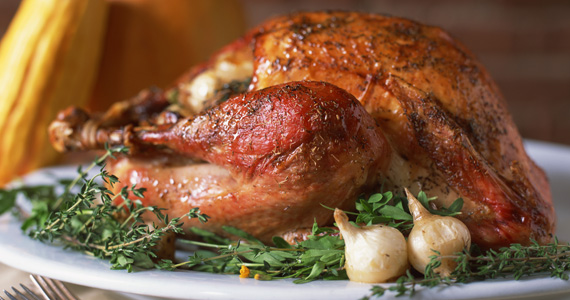
Turkey
As far as festive feasts go, turkey is actually quite healthy! From being mince for bolognese and burgers to tasty fillets and the all-important Christmas roast, turkey is lower in kilojoules, total fat, and saturated fatty acids than any other mice products, according to a recent nutritional report by Food & Nutrition Australia. And after all that chopping, mashing and roasting that went into creating your feast, it’s natural to want to take a big break before dealing with all the Christmas leftovers. And why not; you’ve earned it! But unfortunately, food safety is important regardless of post-celebration exhaustion, and leftovers, especially turkey and other meat, are best dealt with as soon as possible to eliminate the possibility of sickness and save money.
Store |
Raw poultry products should be maintained at 4°C or below to greatly reduce the growth of any pathogenic bacteria that may be present. Bacteria can also spread if raw meat and poultry touches or drips onto cooked foods, so make sure to store raw meat below cooked food to prevent potential cross-contamination. Leftover turkey can keep for 3-4 days in the fridge and still be safe to eat. In the freezer, leftovers should be eaten within 6 months. After this time-frame, the quality of food will be more susceptible to freezer burn.
- Refrigerate promptly – do not leave out on the bench-top at room temperature.
- Never leave cooked turkey at room temperature for longer than 2 hours. If not eaten within that timeframe, refrigerate.
- Keep your roasted bird in an oven or on a stove at above 60°C until ready to serve.
- Wash your hands in hot soapy water and dry thoroughly before preparing and after touching raw meat and poultry.
- Thoroughly clean all utensils, equipment and surfaces after preparing. Use a separate cutting board and knife.
- Sending leftovers ho,e with guests is a great way to minimise the amount of refrigerator or freezer space used, but be aware of the ‘two hour rule’ and consider the amount of travel time your guest has to take. If longer than two hours, give them a cooler and some ice to get the food home safely – or even better, ask them beforehand to come prepared with a cooler.
Cook |
Turkey should be fully defrosted in the fridge, not on the kitchen bench, before cooking.
Plan ahead: A large frozen turkey can take up to 3 days to defrost safely in the fridge. A turkey is defrosted if it’s possible to put a skewer right through to the bone of the thicket parts.
- If not done already, remove plastic bag containing giblets
- Follow cooking instructions on packaging, recipe, or from the butcher
- Allow a cooking time of approximately 45 minutes per kilo
- Do not try to cook the turkey at a lower temperature for longer (e.g. overnight) as this will only encourage bacteria to grow.
- Cook until juices run clear
Buy |
There are some simple things you might want to consider to avoid a turkey that’s too small for your gathering or still frozen the morning of your feast!
A good idea, especially if you have a lot of guests coming, is to buy two medium or small turkeys rather than a giant one to cut cooking time, and allows for the cutting of one turkey for serving while the whole bird is displayed on the table.
The preferred method of thawing turkey is in the refrigerator, but may be hard to arrange with a fully stocked fridge. However, submerging in cold water is an alternative method – using your sink or a bucket, keep the turkey in its original wrapper and make sure it is completely covered. It is vital that the cold water is changed every 30 minutes – and will take an hour per kilo to thaw a turkey.
Fun Fact |
Male turkeys are called “gobblers,” after the “gobble” call they make to announce themselves to females (which are called “hens”) and compete with other males.
Recipe Ideas |


